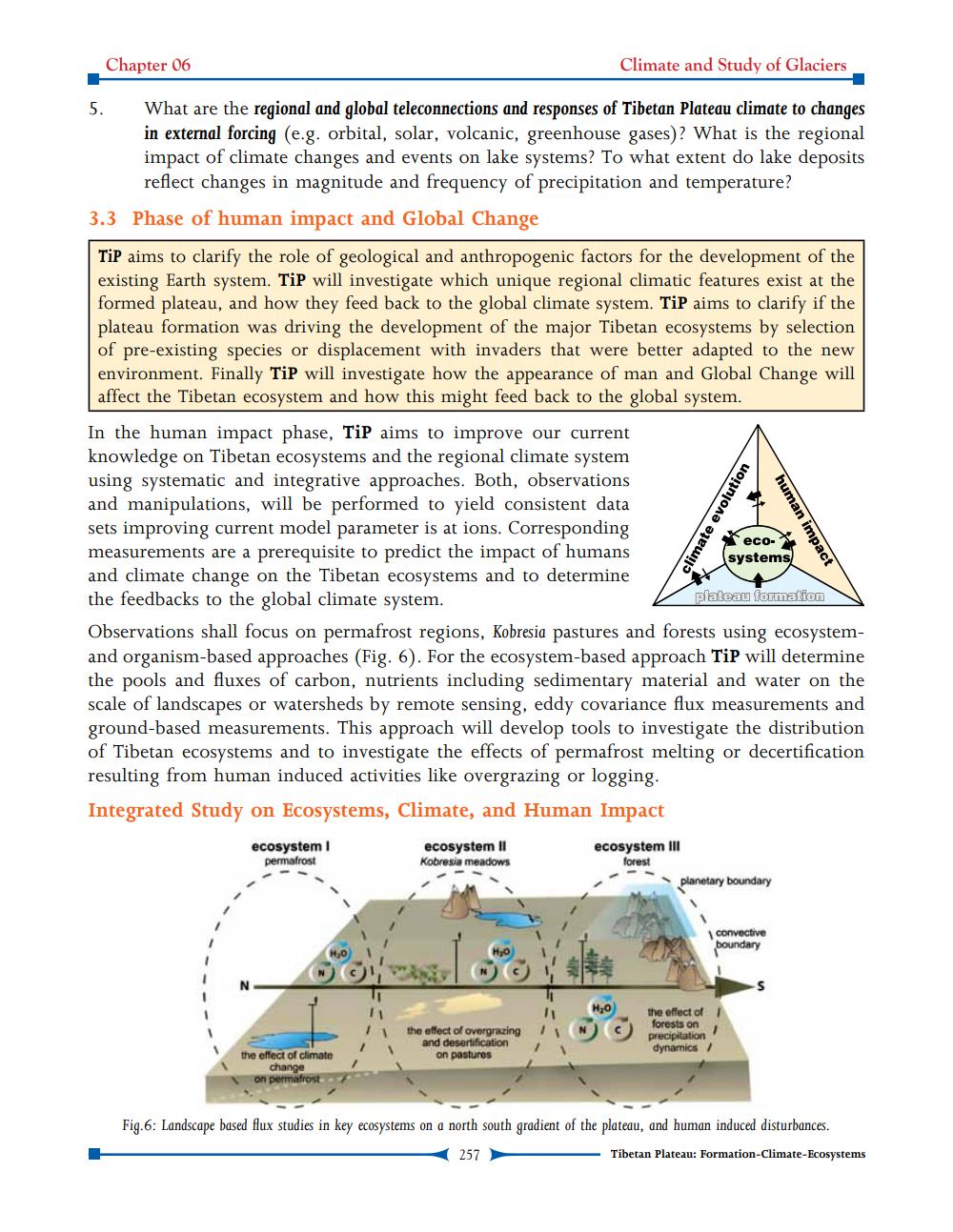________________
Chapter 06
Climate and Study of Glaciers
What are the regional and global teleconnections and responses of Tibetan Plateau climate to changes in external forcing (e.g. orbital, solar, volcanic, greenhouse gases)? What is the regional impact of climate changes and events on lake systems? To what extent do lake deposits
reflect changes in magnitude and frequency of precipitation and temperature? 3.3 Phase of human impact and Global Change
TiP aims to clarify the role of geological and anthropogenic factors for the development of the existing Earth system. TiP will investigate which unique regional climatic features exist at the formed plateau, and how they feed back to the global climate system. Tip aims to clarify if the plateau formation was driving the development of the major Tibetan ecosystems by selection of pre-existing species or displacement with invaders that were better adapted to the new environment. Finally TiP will investigate how the appearance of man and Global Change will affect the Tibetan ecosystem and how this might feed back to the global system.
climate evolution
human impact
In the human impact phase, Tip aims to improve our current knowledge on Tibetan ecosystems and the regional climate system using systematic and integrative approaches. Both, observations and manipulations, will be performed to yield consistent data sets improving current model parameter is at ions. Corresponding
ecomeasurements are a prerequisite to predict the impact of humans
systems and climate change on the Tibetan ecosystems and to determine the feedbacks to the global climate system.
plateau formation Observations shall focus on permafrost regions, Kobresia pastures and forests using ecosystemand organism-based approaches (Fig. 6). For the ecosystem-based approach TiP will determine the pools and fluxes of carbon, nutrients including sedimentary material and water on the scale of landscapes or watersheds by remote sensing, eddy covariance flux measurements and ground-based measurements. This approach will develop tools to investigate the distribution of Tibetan ecosystems and to investigate the effects of permafrost melting or decertification resulting from human induced activities like overgrazing or logging. Integrated Study on Ecosystems, Climate, and Human Impact
ecosystem 1
permafrost
ecosystem II Kobresia meadows
ecosystem III
forest
planetary boundary
convective boundary
the effect of overgrazing and desertification
on pastures
the effect of
forests on precipitation dynamics /
the effect of climate
change on permafrost
Fig.6: Landscape based flux studies in key ecosystems on a north south gradient of the plateau, and human induced disturbances.
257
Tibetan Plateau: Formation-Climate-Ecosystems




